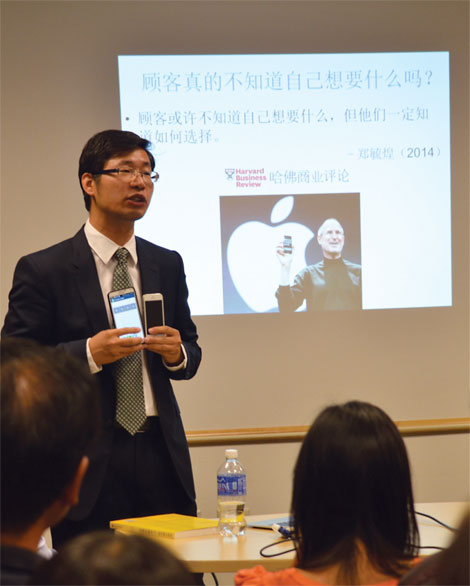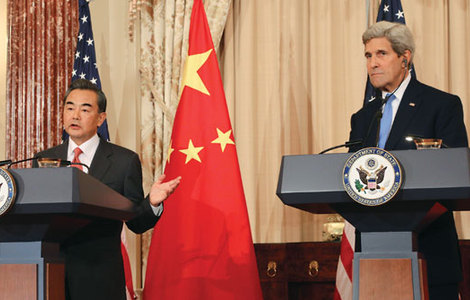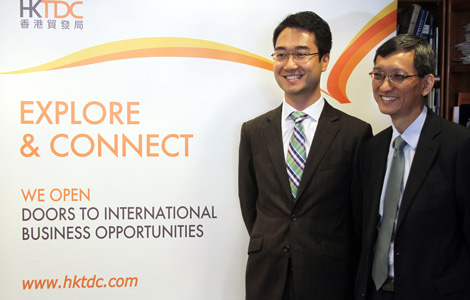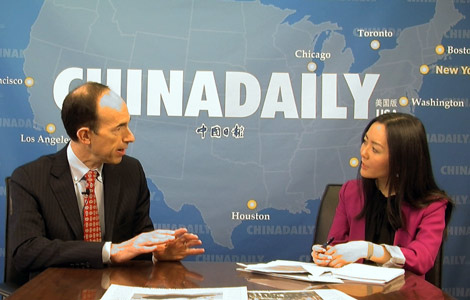Identifying gaps is key to succeeding in Chinese market
Updated: 2014-10-02 11:25
By Lian Zi in San Francisco(China Daily USA)
|
||||||||
|
Zheng Yuhuang, professor of Tsinghua University, delivers a speech on understanding consumers and marketing in China at Stanford University in California on Tuesday night. Lian Zi / China Daily |
For foreign companies, the key to penetrating the Chinese market is to find gaps in existing products and services and using technology and marketing skills, entrepreneurs should identify and then fill those gaps, according to Zheng Yuhuang, a leading marketing scholar in China.
Zheng, who currently teaches at Tsinghua University, conducted a seminar, Understanding Consumers and Marketing in China, at Stanford University in Palo Alto, California, on Tuesday. The event's goal was to educate young entrepreneurs who have an interest in the Chinese market.
Foreign enterprises face challenges after entering the Chinese market due to strict government regulatory requirements and strong competition, Zheng said.
The classroom was crowded by attendees from cities all around California. Zheng told China Daily that he was impressed by young people's entrepreneurial passion in Silicon Valley.
"The key strategy for these young entrepreneurs to gain success is to identify the gaps in the current industry and then create or provide better products and services to satisfy customer needs and fill those gaps," said Zheng.
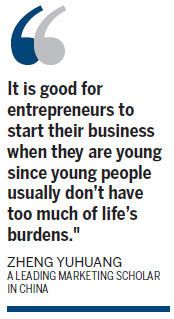
Pursuing success is a continuous process of hard work, he added. "It is good for entrepreneurs to start their business when they are young since young people usually don't have too much of life's burdens," said Zheng.
Technology innovation and marketing are the two pillars for starting a business. Zheng showed a smiling curve to the audience and pointed out that foreign companies such as Apple always stay at the two profitable ends of the curve by continuously innovating, designing and marketing their products. However, "Made in China" put China at the bottom of the curve, where it could only generate about 5 percent of the profit.
However, if young entrepreneurs are in a dilemma in choosing between technology innovation and marketing since they may not have enough resources to do both, Zheng strongly urged them to pay more attention to marketing to attract and retain customers.
"Doing business is different than conducting academic research," said Zheng, adding that not every advanced technology can be a commercial success.
For example, even though a lot of advanced technology innovations were used in the design of the Concorde, the first commercial supersonic passenger airliner, it was still not the first choice of most customers since the flight tickets were expensive, Zheng said.
Zheng said Steve Jobs, former CEO of Apple, may have been regarded as a marketing genius, but he holds a different opinion citing one of Job's statements that people don't know what they want until you show it to them a lot.
Zheng said in many cases, customers understand what they need and what they want if they can be provided with enough options.
Localization is another important strategy for foreign companies to learn. "People in different countries have different habits, different needs and different preferences. When entering the Chinese market, companies should adapt, redesign or localize their products and services to meet the needs of Chinese customers," said Zheng.
American fast-food chain KFC's successful expansion in China could be a good example of localization, according to Zheng. During its operation in China, KFC tries to lure more Chinese consumers by localizing its menu and offering low-priced traditional Chinese food such as fried dough sticks for breakfast in the country. After ramping up its "going local" efforts in the Chinese market, KFC has already achieved a higher rate of growth than McDonald's in China.
zilian@chinadailyusa.com
(China Daily USA 10/02/2014 page2)
Most Viewed
Editor's Picks

|

|

|

|

|

|
Today's Top News
'One Country, Two Systems' vital
China, US voice commitment to ties
Obama, Chinese FM meet on relations
FM urges enhancement of strategic trust with US
China willing to jointly counter terror threat with US
China issues rules to manage local govt debts
China calls for non-intereference in internal affairs
Identifying gaps is key to succeeding in Chinese market
US Weekly

|

|
